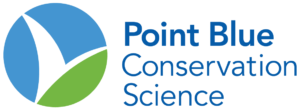 Flocks of Dunlin in rice fields in Colusa, California © Drew Kelly
Flocks of Dunlin in rice fields in Colusa, California © Drew KellyFarmlands Program
Late Summer Farmlands Habitat Program 2025 – APPLICATIONS NOW CLOSED!
The objective of the BirdReturns-Late Summer Farmlands Habitat Program is to incentivize farmers to create shallow wetland habitat for migrating shorebirds and other species when habitat is most needed in late summer and early fall. By maintaining shallow, mud-flat conditions on idle or harvested and unvegetated fields for a five-week period between July and September, farmers can provide critical habitat while supporting their farms and local communities.
The program can be implemented on a broad suite of rotating/resting cropland or crops typically harvested before the late summer target habitat period, including but not limited to wheat and other cereal grains, garbanzo beans, tomatoes, potatoes, sunflower, safflower, corn, or rice. Past participating cropland has included wheat, grasses, tomatoes, idle/rotating rice, and others. Suitable habitat conditions have been created using both flood-irrigation and subsurface drip irrigation.
Program Requirements
APPLICATION PERIOD (CLOSED)
February 24 – April 4, 2025 at 11:59pm
All bids are final once the application period is closed.
ELIGIBLE APPLICANTS
- Fields in the Sacramento-San Joaquin Delta and the Sacramento Valley
- Idle or rotating/resting fields, or fields harvested before the target habitat period that meet vegetation management requirements (see below)
- Fields 30 acres or larger (continuous smaller fields may be accepted)
- Open fields with no trees or vines within or immediately adjacent
- Fields with access to ground and/or surface water
INELIGIBLE APPLICANTS
- Fields enrolled in any annual incentive program (i.e., NRCS EQIP) that provides payment to conduct flooding during the same time window that is proposed for enrollment in this BirdReturns-Late Summer Farmlands Habitat Program.
- Fields within 5 miles of major airports, including Sacramento International and Travis AFB (check map here)
- Fields less than 30 acres in size
- Fields located close to population centers or within vector hot spots, depending on local conditions or concerns. Areas indicated in (but not limited to) this map will be more carefully assessed during selection. Please reach out to the BirdReturns program manager prior to bidding if all or a portion of your field is located within these areas.

Enrollment Period
Any continuous five-week period between July 14-September 30, 2025. All enrollments will begin on a Monday.
- Participants may start their enrollment on any Monday between July 14 and September 1. (The application will require selection of a Monday start date.)
- If multiple fields (in close proximity) are available for flooding, it is beneficial to stagger the flood-ups by 2-3 weeks.
Practice Specifications
| Program Enrollment Start Date: | > Participants may start their enrollment on any Monday between July 14 and September 1. (The application will require selection of a Monday start date.) > If multiple fields (in close proximity) are available for flooding, it is beneficial to stagger the flood-ups by 2-3 weeks. IMPORTANT: After enrollment, we allow flexibility of start dates in case of unforeseen circumstances only. Alteration of start date must be approved in writing (or electronic correspondence). |
| Vegetation management requirements: | > Fields must have little to no standing vegetation, stubble, or crop residue so shorebirds can easily access the ground surface for foraging > In fields that have recently been in production, incorporation of crop residue must take place to expose the soil > Standing crop stubble or other emergent vegetation must not exceed 10% cover |
| Field prep recommendations: | Any combination of the following post-harvest crop stubble treatments and incorporation practices may be used to achieve a uniform level surface in the field and remove organic matter. These treatments are strongly recommended to comply with the program’s vegetation management requirements, achieve uniform flooding, and reduce the likelihood of mosquito propagation. – single stubble disc or chisel pass followed by single pass with a finish disc or a roller – double pass with a stubble disc – burn, chop, or bale followed by one of the discing combinations above |
| Flooding requirements: | Time Window: > Target habitat period: Maintain specified conditions for five weeks between July 14-September 30. Enrolled acreage must be fully flooded by the participant’s enrollment start date. Water management: > Weeks 1-3 | Flooding: Maintain mudflat or ponded conditions (puddled to a maximum depth of 4 inches), ensuring that no less than seventy-five percent (75%) of each enrolled field is covered by water. – In sloping fields, the shallow end should have moist soil conditions or mudflats. The deep end may be greater than 4 inches. However, fields will be deemed out of compliance if uniformly deeper than 4 inches. > Weeks 4-5 | Evaporative Drawdown: Allow standing water to evaporate from field. Do not drain or remove checks. |
Suitable Field Conditions:
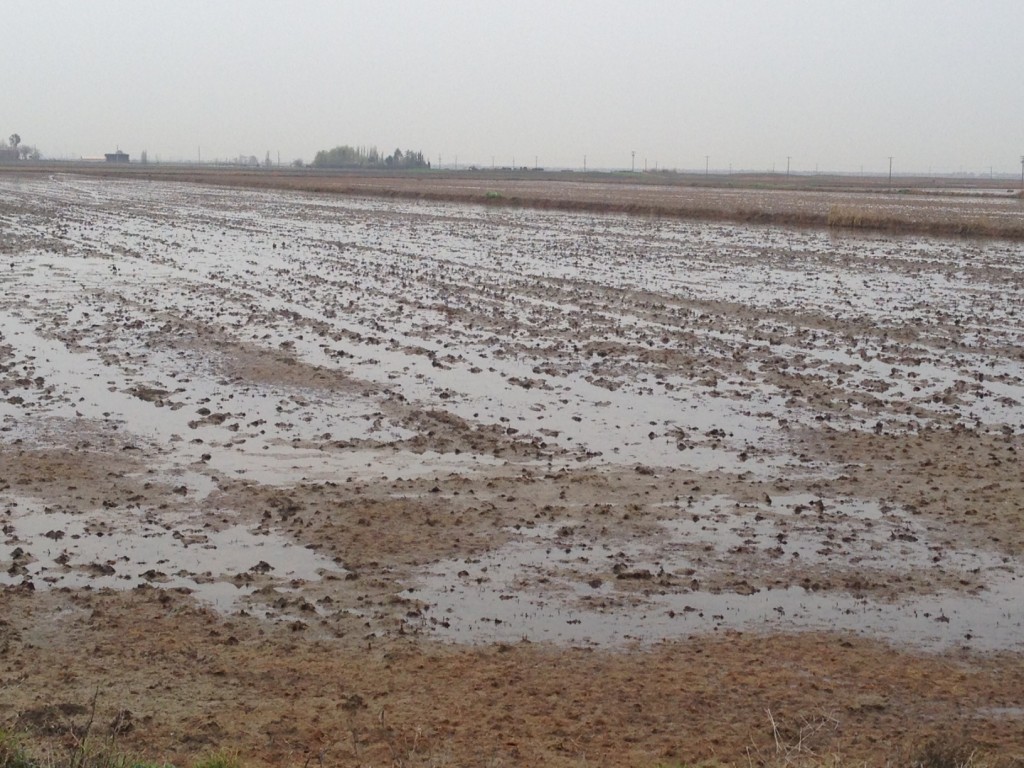 © Greg Golet
© Greg Golet © Greg Golet
© Greg Golet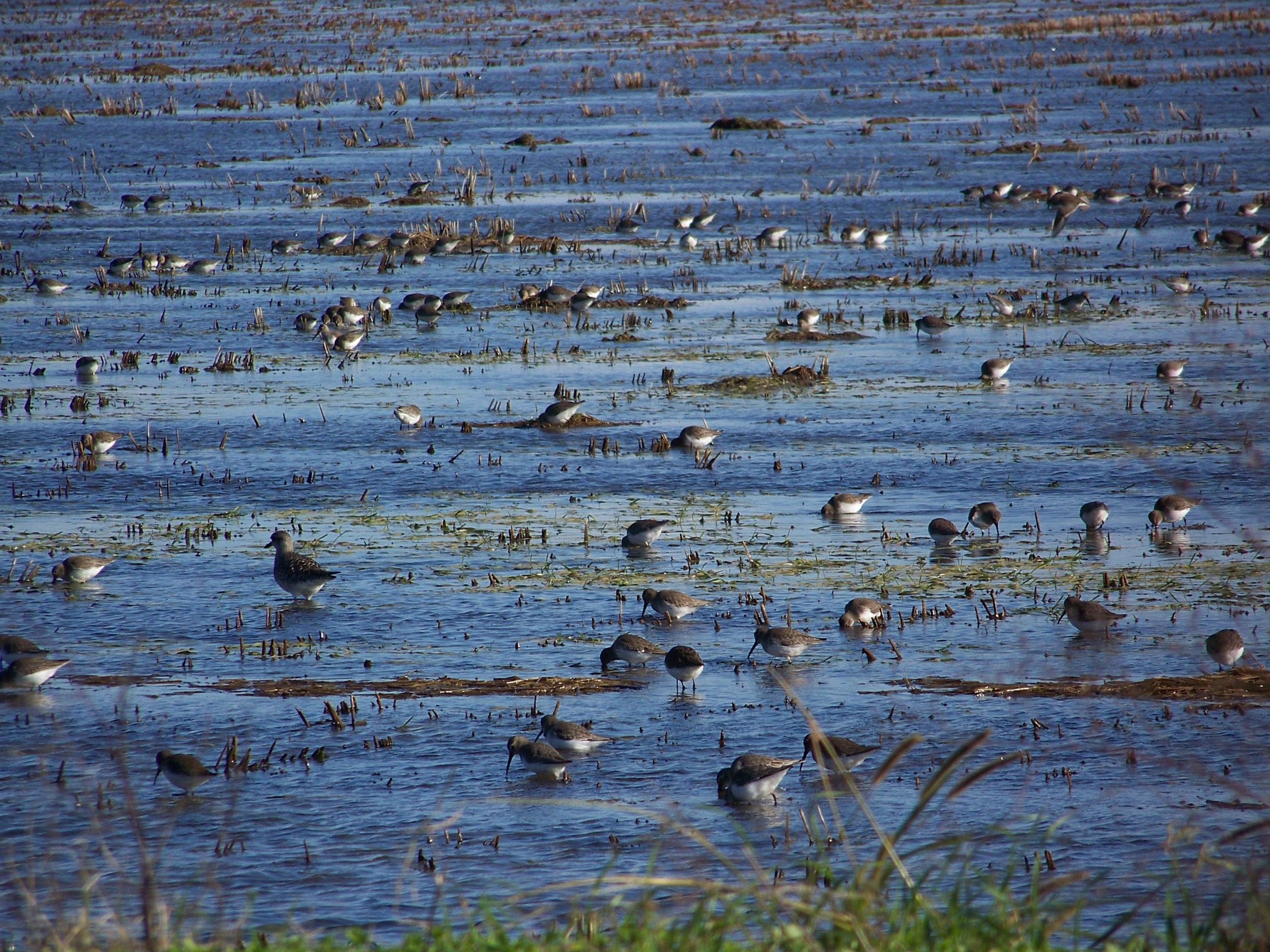 © Greg Golet
© Greg Golet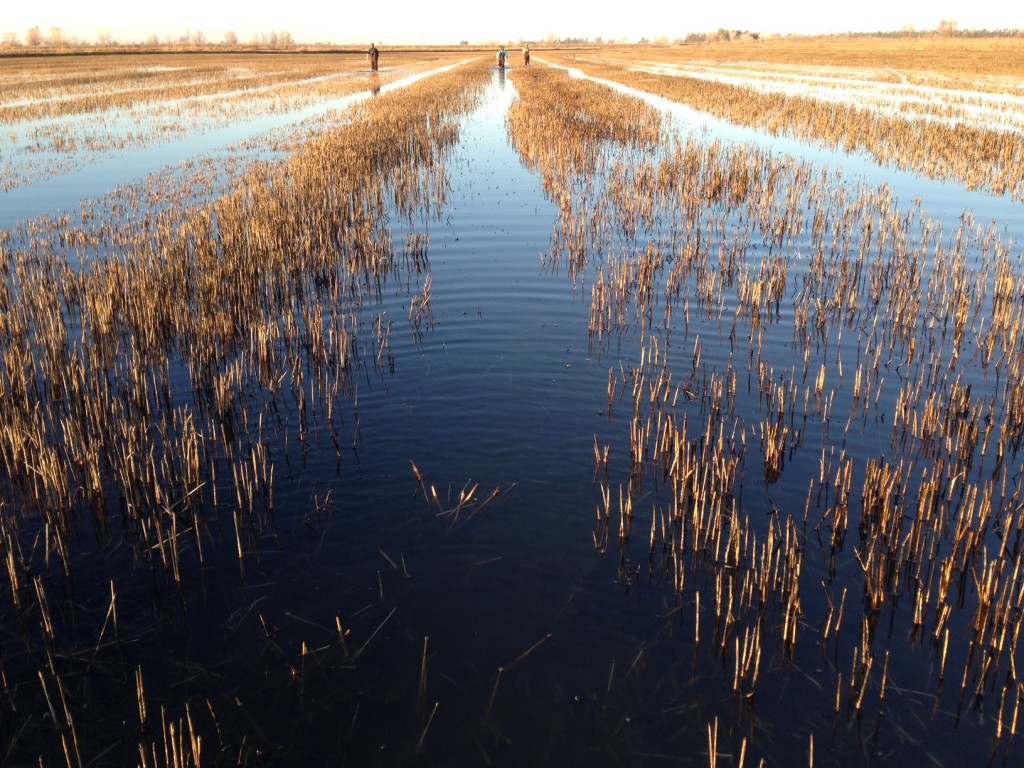 © Greg Golet
© Greg Golet © Greg Golet
© Greg Golet © Greg Golet
© Greg GoletMosquito Abatement Considerations:
Although adequate vegetation removal and field prep will reduce mosquito propagation, enrolled fields may be treated by mosquito/vector control districts.
All interested applicants must contact their local district representatives to notify them of their possible program enrollment and flooding dates. Growers can find their mosquito vector control district here: https://shorturl.at/zDGJS. In addition, BirdReturns program managers will notify mosquito/vector control districts upon property selection and landowner confirmation of willingness to enroll.
NEW IN 2025: Mosquito/Vector control treatment costs incurred on enrolled fields will be fully reimbursable by BirdReturns for the Late Summer Farmlands Habitat Program in 2025 if vegetation management requirements have been met. See below for Guidance on Preparing a Bid.
Program Budget:
BUDGET: $1,225,000
CENTRAL VALLEY HABITAT GOAL: 40,000 acres
Bidding and Selection
Different from most other habitat incentive programs which offer participants compensation at a fixed rate, the BirdReturns Late Summer Farmlands Habitat Program requires applicants to submit bids that are informed by their unique costs and individual circumstances.
Guidance for Preparing a Bid
To prepare a competitive bid price, BirdReturns encourages applicants to consider the real costs they will incur to comply with the practice requirements. Costs to consider in preparing a bid include:
- Field prep (e.g., disking, pulling berms, pulling drains)
- Water supply
- Additional discretionary labor and field visits, needed to keep fields in compliance with program requirements
NEW IN 2025: Applicants should submit a bid price that excludes potential vector control treatment costs. These costs, if incurred by the participant for enrolled fields, will be fully reimbursable by BirdReturns for the Late Summer Farmlands Habitat Program in 2025. The process for submitting these expenses for reimbursement will be described in all contracts issued for this year’s program.
Bid Ranking and Scoring Process
All bids will be ranked and scored by representatives from the Migratory Bird Conservation Partnership and the California Department of Fish and Wildlife. The selection committee will assess bids according to standardized methods, using the best available science and tools that predict the habitat value of each bid. We will select a diversity of crop types with the intention to build habitat resiliency across the landscape. Sites will be scored and ranked based on bid price and characteristics important to habitat quality such as overall acreage, field size and location, timing and duration of flooding, and history of bird use in the general area. Applicants that have earlier start dates and offer competitive pricing will rank higher.
Feel free to contact us if you’d like additional information on scoring criteria. We reserve the right to reject any bids that are determined to be unreasonably priced.
Notices of Awards and Rejections will be issued by May 23, 2025.
Why the Late Summer Farmlands Habitat Program Matters
Each spring and late summer, shorebirds like sandpipers and plovers migrate thousands of miles along the Pacific Flyway, stopping in California’s Central Valley to rest and refuel. Historically, natural wetlands throughout the valley provided ideal habitat for these birds. With over 90% of natural wetlands lost in California, shorebirds and many other wetland species now depend largely on post-harvest flooded agriculture.
Unfortunately, some waterbird populations are steeply declining, including shorebirds, which have seen a 40% decrease over the last 50 years. Some waterbird-friendly crops are being converted to other uses, while many crops are still in production in late summer when shorebirds most need habitat.
The BirdReturns Late Summer Farmlands Program helps ensure that shallow-flooded habitat remains on the landscape at a critical time of year so that shorebirds and other wetland species have a place to thrive. By participating in this program, you’re helping to protect migratory birds and other wildlife while supporting farmers and your local community.

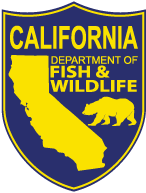
The BirdReturns-Late Summer Farmlands Habitat Program is managed by the Migratory Bird Conservation Partnership (The Nature Conservancy, Audubon California, and Point Blue Conservation Science), in partnership with the Delta Conservancy, and the program funder, the California Department of Fish and Wildlife.




